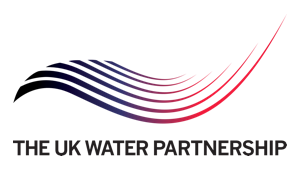The challenge
In many parts of the world groundwater is used for drinking, cooking and irrigating crops, and the level of arsenic it contains is a major health risk. Continual exposure to high concentrations of arsenic in water can result in people developing cancers, ischaemic heart disease and compromised immune systems. This is particularly marked in countries such as Bangladesh, where it is estimated that tens of thousands of people die prematurely each year because of chronic exposure to this carcinogenic hazard. However, risks also exist in the UK, for example to users of private water supplies in the South West of England, and to groups with a high rice diet.
To address the risks posed by arsenic-contaminated groundwater, we need to understand how arsenic enters water sources, assess the risk it poses and raise public awareness of those risks.
The solution
With funding from multiple sources, the University of Manchester brought geochemists and microbiologists together on various research projects to better understand the extent and origins of this problem in different parts of the world.
In Bengal, the researchers discovered that indigenous metal-reducing bacteria are critical to the processes, driving the transfer of arsenic into groundwater, where they can represent a significant health risk to those using contaminated water for drinking or cooking. The research helped predictive groundwater arsenic hazard maps to be developed. In Bengal, the researchers also analysed arsenic concentration in local rice and average levels of consumption to calculate typical exposure. They not only discovered that rice is a major exposure route for arsenic in humans in some affected areas but that it is also associated with elevated levels of genetic damage..
In the UK, research has shown that arsenic exposure from rice raises potentially significant health concerns in groups with high rice diets. Working with the British Geological Survey (BGS) and Public Health England, research is also being carried out in South West England, where earlier studies revealed that over 5% of private water supplies contained arsenic at levels higher than the WHO provisional guide value.
Resulting benefits
In Cambodia, the research has helped Resource Development International, a local NGO, to help advise on alternative water sources for impacted populations, and has initiated consideration of new bioremediation technologies. The highlighting of arsenic concentrations in rice has been reflected by revised FAO recommendations on provisional weekly tolerable intake, and in explicit acknowledgement of the importance of rice as an arsenic exposure route by the European Food Safety Authority. In the UK, the discovery of high arsenic levels in private water supplies has helped inform PHE on arsenic exposure, and the risk of arsenic exposure via various routes is now publicly acknowledged.
Future directions
NERC funded research is ongoing into:
- potential year-in-year increases in groundwater arsenic hazard in Asia as a result of massive abstraction of groundwater; and
- assessment of arsenic exposure routes to UK population groups.
- Banerjee M, Banerjee N, Bhattacharjee P, Mondal D, Lythgoe PR, Martinez M, Pan J, Polya DA and Giri AK. High arsenic rice is associated with elevated genotoxic effects in humans. Scientific Reports. 2013 July; 3: .DOI:10.1038/srep02195
- Lawson ., Polya , DA, Boyce, AJ, Bryant, C, Mondal, D, Shantz, A and Ballentine, CJ Pond-Derived Organic Carbon Driving Changes in Arsenic Hazard Found in Asian Groundwaters. Environmental Science and Technology. 2013 June; 47(13): 7085-7094. DOI:10.1021/es400114q
- Polya DA, Charlet L. Rising arsenic risk? Nature Geoscience. 2009; 2: 383-384. DOI:10.1038/ngeo537
- Vaughan, D.J. and Polya D.A. Arsenic: The Great Poisoner Revisited Elements 2013 p 315-6
- Millot R, Charlet L and Polya, DA. Un fléau mondial: la contamination de l'eau par l'arsenic. Pour la science. 2011; volume 408, 76-82.
- Polya, DA Human Health Risks Attributable to Groundwater Arsenic in Southern Asia. Video of paper delivered at CRASSH Workshop “Managing our Future: Environmental and Natural Hazards”at Universitry of Cambridge on 12 March 2010.
Customer:


Sources of funding
- NERC - Predicting Secular Changes in Arsenic Hazard in Circum-Himalayan Groundwaters. £ 755,124 Awarded to Polya (PI), Ballentine & van Dongen (University of Manchester) with Boyce (SUERC), Bryant (RCL), Kuras (British Geological Survey), Sovann, Eliyan (RUPP, Cambodia), Shantz (RDI, Cambodia), Fendorf (Stanford, USA), Benner (Boise State, USA), Polizzotto (NCSU, USA). July 2012. NE/J023833/1.
- NERC - C-14 dating in relation to "Isotopic tracing of organic carbon and its role in arsenic release in a Cambodian Aquifer. £ 20,800. Awarded to Polya (PI), Lawson, Ballentine, Van Dongen, Lloyd, Hery, Al Lawati (University of Manchester), Bryant (RCL), Boyce (SUERC, Fendorf, Polizzoto, Kocar (Stanford University, USA), Benner (Boise State University, USA), Pancost (Bristol) May 2009. Radiocarbon Analysis Allocation Number 1411.0409
- British Council/ UKIERI - PRAMA: Probabilisitic risk assessment modelling for mitigation of arsenic in groundwaters in West Bengal. £ 113k. Awarded to Polya (PI; UK Team Leader); Giri (IICB, Kolkata, India, India Team Leader). Standard Research Grant. March 2008
- European Commission - AquaTRAIN: Geogenic Contaminants in Groundwaters and Soils: A Research Training Network Approx. £ 3,000,000 awarded to Polya (Coordinator) (Manchester) & 14 other European Partners. FP6 Marie Curie RTN., Sept 2006 (MRTN-CT-2006-035420).
- EPSRC - Nanoscale Biogeochemistry of Arsenic & Bioremediation of High Arsenic Groundwaters in Southern Asia. £ 259,653 Awarded to Polya (PI), Lloyd, Vaughan & Wogelius, March 2003 (GR/S30207/01)




















 The Water Security Knowledge Exchange Portal supports the objectives of the
The Water Security Knowledge Exchange Portal supports the objectives of the 